
Going to Hungary’s capital and wondering what to see and do in Budapest in 2 days? You’ve come to the right place.
But before starting this guide, just a tiny disclaimer: I’ve decided to include a lot of attractions to visit because I’ve tried this guide myself. Also, I’ve selected all landmarks to see strategically, according to their geographic position in the city.
However, depending on how long you like to do things, time might run short. So I’ll be giving you a complete 2-day itinerary in Budapest. But whether you do everything or just some of it, ultimately that’ll be up to you. Most of all, make sure to enjoy your time there – and hopefully learn something too.
Table of contents: ()
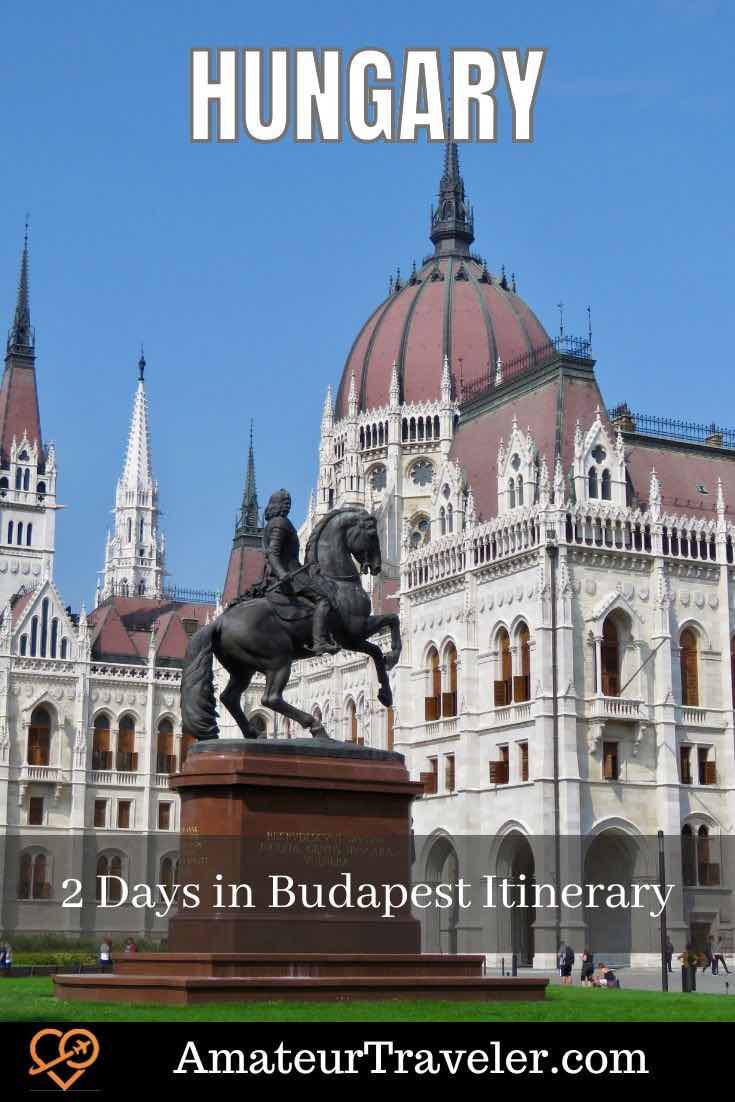
Day 1 of Budapest itinerary in 2 days
Day 1 will be spent mostly in Pest, which is where I recommend you stay.
Margaret Island/Bridge
This can be a great place to begin your journey, especially if you do it in the morning when it’s not crowded. Margaret Island (or Margitsziget) can be accessed through the beautiful yellow bridge with the same name. It lies on the Danube, and it’s really huge (1.6 miles long), so I don’t encourage you to explore it fully, or you could easily spend the whole day there. But do enter, take in the natural surroundings, and watch the musical fountain show, which takes 30 minutes.
From Margaret Bridge, you’ll get the first peek (and what a peek) at your next destination: the Budapest Parliament.
Hungarian Parliament
Once you’re done with Margaret Island, it just seems logical to go to the Parliament, a mere 15-minute walk by the Danube. But you can also take a tram. Numbers 2, 23, and 2B from Jászai Mari tér (across from McDonald’s) will get you there in 10 minutes.
The Budapest Parliament is probably the most important sight you’ll see in the city. It houses the National Hungarian Assembly and is a symbol of resistance to the hardships Hungary faced during the 20th century. Most of all, from the first moment you see it, you’ll notice—it’s enormous and absolutely gorgeous.
Hungarian Parliament highlights:
- Inaugurated in 1904, it’s considered the most important building in Hungary as it’s the House of Democracy.
- It’s the largest building in the country: 96 meters (315 feet) tall and 268 meters (879 feet) long.
- It’s one of the biggest parliaments in the world.
- There’s a mix of Baroque, Gothic, and Renaissance styles in its architecture.
- It also houses the Holy Crown.
If you want to explore the Parliament’s gardens and admire the monument from the outside, that’s a great thing to do. It’s a pretty wide area, never too crowded, and everything in it is beautiful.
But if you’re interested in going inside the Parliament and learning about its history, their English guided tours only take 45 minutes. It costs 12,000 forints (around 33 USD) for non-EEA (European Economic Area) citizens, or 6,000 forints (around 16.50 USD) for EEA citizens.
Shoes on the Danube Bank
After visiting the Parliament, you can enjoy a short stroll along the Danube until you reach the Memorial called Shoes on the Danube, a sculpture consisting of sixty pairs of iron shoes. Once you arrive, you’ll sense a somewhat heavier atmosphere.
Created in 2005, this memorial honors all Jews and other individuals massacred during the Second World War in Hungary. In those troubling times, about 3,500 people (800 of them Jewish) were ordered to take off their shoes and were then shot by the Hungarian fascist party (the Arrow Cross). Their bodies fell into the river, while their shoes were likely sold.
St. Stephen’s Basilica
From the Memorial, you can walk to St. Stephen’s Basilica (or Szent István Basilika) and be there in about 15 minutes. But if you happen to spend longer at the Parliament and go straight from there, you can take bus 15. Again, in a quarter of an hour, you’ll arrive at the Basilica.
And why should you visit the Basilica, you might ask? Again, I’m talking about another majestic building. To put it simply, it offers another jaw-dropping view. And with its square in front, it almost makes you feel like you’re in Italy.
St. Stephen’s Basilica’s highlights:
- Neo-classical Roman Catholic Church
- Built in 1905, its construction took 54 years
- Dedicated to Stephen, the first King of Hungary (c. 975–1038), whose right hand is in the Basilica’s reliquary
- It’s also a huge building – 96 meters (314 ft) tall
Just like with the Parliament, you can be marveled by just observing the Basilica’s façade. But the true highlight is in its interior: for just about 6 US dollars, you can admire the beautiful frescoes on the dome. It won’t take more than 20 minutes. The only downside is that to buy a ticket, you usually face some crowds, so try to get it online to skip that queue. Oh, and I don’t encourage you to visit its terrace—the view isn’t anywhere near as good as others that you’ll read about later, and the ticket price increases substantially.
Have lunch around the Basilica
Now that you’ve visited the Basilica, it’s probably time for lunch – and you’ll find yourself in a great place for a meal. Treat yourself to one of the restaurants that you find at the square or in the street just in front, called Zrínyi utca. My favorite here goes by the name of Akademia Italia Budapest and is located just next to the Basilica, but you have numerous other options. And if you want to try some local food, like a good goulash, Porc & Prezli Restaurant or Ezaz Bistro might be better choices. Just remember to make a reservation first; otherwise, it might be difficult to find a spot.
Dohány Street Synagogue
With a happy tummy and maybe a coffee on top, hopefully, you’ll have your batteries recharged and ready for the next item on this list.
It’s time to visit the Budapest Synagogue, also known as the Dohány Street Synagogue or the Great Synagogue of Budapest. It’s the largest in Europe and a landmark of great importance for the local Jewish community. It’s also quite famous for its mix of architectural styles, which you might find reminiscent of Muslim buildings.
Budapest Synagogue’s highlights:
- Built in 1859
- It’s an important building for the Jewish community, especially for Neolog Judaism
- It has a Moorish Revival style, and its decoration is based on Islamic models from North Africa and Medieval Spain
- It’s part of a complex that also houses the Heroes Temple, the graveyard, the Jewish Museum, and the Jewish Memorial
Once again, you can opt for just admiring the Synagogue from the outside, but you can also enter the complex for a fee. The Synagogue itself is beautiful and rich, with its Torah ark and frescoes made of gold and colored geometric shapes. But there’s also the Jewish Museum and the Raoul Wallenberg Memorial—a weeping willow whose leaves bear the names of 400,000 Hungarian Jews who were victims of the Holocaust. The entrance to the complex costs 10,800 HUF per adult.
Bonus tip: On the way to the Synagogue, you’ll be close to Vörösmarty Square and Váci/Fashion Street. If you feel like buying any souvenirs, this might be a good time.
Jewish Quarter (7th District)
You’ve probably realized by now that the Synagogue is on Dohány utca. That street holds significant Holocaust connotations, as it was the border of the Budapest Ghetto during WWII. More precisely, this quarter is the area lying within Király utca, Erzsébet körút, Dohány utca, and Károly körút.
So, from Dohány Street, you’re in the perfect position to start exploring the Jewish Quarter. And if the Synagogue Complex might bring your mood down, worry not—because the Jewish District is quite lively and cheerful, full of things to do.
You’ll find Hungarian culture thriving, with streets full of shops, cafes, restaurants, booksellers, galleries, and much more. If you head to Madách Imre Square, you’ll get an idea. You might even feel tempted to have a beer… or two. We don’t judge! But my best advice here is probably to just walk for 30-60 minutes around the District and enjoy the cultural offerings.
Szimpla Kért, the first Ruin Pub in Budapest
Since you’re in the Jewish Quarter, why not visit Szimpla Kert? To give you an idea of the distances, you’ll need less than 10 minutes to walk from the Great Synagogue to Szimpla. Everything is pretty close.
And why should you go there? Because it’s simply Szimpla (see what I did there?). It’s the most famous ruin pub in Budapest, one of the biggest, and the first ever in town. These ruin bars are typically housed in WWII ruins, with a very funky decor – and there are lots of them in Budapest, having become an important part of Hungarian culture in the last decades. But Szimpla was the first, and its chaotic and green interior is simply unique.
Do go there if you find the time (hopefully you will, by following this itinerary). Whether you just want to visit as a tourist during the day (no minimum consumption), or you want some beer or even partying, this place serves all purposes, and it’s for all ages.
Just be aware that after 9 pm every day, a line will start to form…and IDs will be asked. So remember to bring yours!
Dinner
By the time you’re done with Szimpla, you might be getting hungry. Again, there are a ton of restaurants in the 7th and 6th districts, so I’d just advise you to stay around. But if you feel like, sticking to Szimpla is also a great idea—they do have a kitchen, and their burgers are great. And if you fancy a local goulash, or even if you’re brave enough for a sneaky Pálinka, well…this can be your place too.
Other than that, there are many restaurants nearby. My absolute favorite in the city is called Dobrumba, and has a mix of Mediterranean, Middle Eastern, and Caucasian cuisines. Delicious food for all tastes, including vegan options. But you’ll have to book it at least 1-2 weeks in advance.
Day 2 of Budapest itinerary in 2 days
Chain Bridge
I’ll admit that the first day might have been quite full. But if you didn’t stay out too late, I hope that by 10 am you’re able to be out exploring again. This time around, you should begin with the Széchenyi Chain Bridge, likely the most famous in all of Budapest, and quite a stunning one.
Chain Bridge key highlights:
- Its construction dates from 1849, making it the first permanent bridge in Budapest.
- It measures 375 meters long (1,230 ft).
- It’s a beautiful suspension iron bridge.
- Famous for its iconic four-stone lions and their legend.
That’s true, there’s a funny legend about those stone-carved lions. In short, the sculptor, János Marschalkó, forgot to carve their tongues, and, being ashamed by the rumor that would quickly spread, he jumped from the bridge and committed suicide. But that’s not how it happened. There was some gossip about it, that’s correct, but János explained that the tongues were there, just not visible to passersby. Instead, one has to climb up the statues to see them (but seriously, please don’t).
Funicular
By crossing the bridge, you’ll arrive at Clark Ádám Square, where the Budapest Funicular is located. This is one of those things I definitely recommend you to do. Not only will you experience a bit of Budapest history, but you’ll also reach the Castle District quite quickly.
Budapest Funicular’s highlights:
- It’s been operating since 1870.
- It was rebuilt after a WWII bombing.
- It’s part of the UNESCO World Heritage Sites.
- It has two tram cars that run on a 95-meter route, climbing 50 meters high.
Castle District
Once you reach the top of the hill by funicular, you’re in the Castle District. From the moment you look to the other side of the Danube, you’ll be amazed by the panoramic views. You’ll be able to see the Parliament and the Chain Bridge, not to mention the Budapest Eye, Margaret Bridge, Margaret Island, and other delightful sights.
And that’s not all: inside the Castle District, you’ll have a lot to explore, which is why I suggest setting aside at least 2 hours for this purpose. Here’s what you can find there:
Buda Castle
The Budapest Castle is one of the main attractions in Budapest. It was first built in 1265, though its current Baroque characteristics were part of its reconstruction in the 18th century.
Buda Castle highlights:
- Built by King Béla IV of Hungary between 1247 and 1265
- It was occupied by the Ottomans in the 16th century
- In 1686, Buda was finally recaptured by allied Christian forces
- Only a fragment of the medieval castle is still standing
- There’s a Gothic Hall, an important example of Gothic architecture in Central Europe
- The palace went through different phases of reconstruction and modernization throughout the centuries up to the current days
You can look at it from the outside and explore its picturesque gardens with statues (and the incredible panoramas, of course), and you may even go inside by visiting one of its paid museums, like the Hungarian National Gallery or the Budapest History Museum. In the interest of time, I recommend visiting only one, if at all.
Fisherman’s Bastion
With its beautiful lookout terraces offering the best views of Budapest, Fisherman’s Bastion presents a great way to take one last look over the city and its gorgeous Parliament. But the place itself is also beautiful: a Romanesque fortification with roots dating from the 1700s, yet very well maintained. That makes it one of the most visited attractions in Budapest—you’ll surely want to capture a picture from there overlooking the Danube or the Bastion’s staircase (Jesuit stairs).
Some of its terraces are free, providing a splendid view of the city. And, for a fee, you can also enter some of the towers. The view won’t differ greatly, so I don’t think there’s a point in it. But it’s definitely your call.
Fisherman’s Bastion highlights:
- The walls from today were built in 1851
- Neo-Romanesque style
- Its main façade is approximately 140 meters long
- Allegedly built to protect this part of the castle, by the fishermen who lived under the walls
- Book Your Accommodation HERE
- Get a universal plug adapter
- Search for Great Tours HERE
- Get an eSim to be able to use your smartphone abroad.
- Get a Car Rental
- Buy Travel Insurance
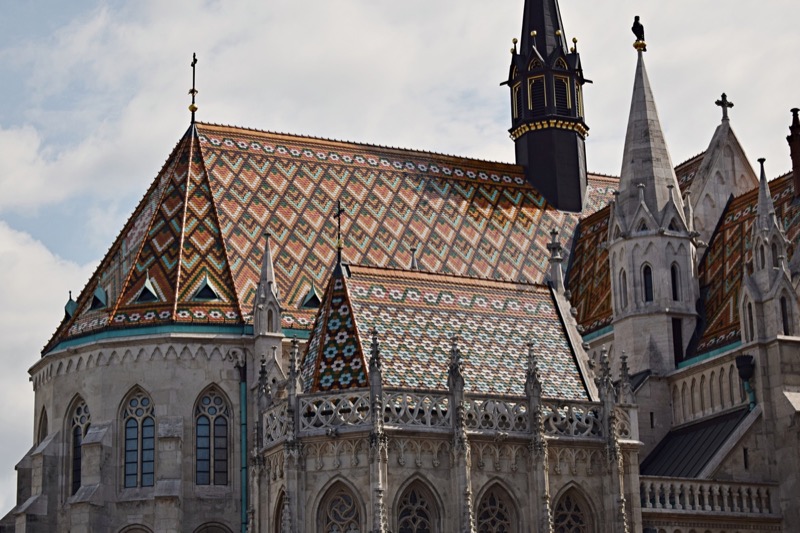
Matthias Church
Named after King Matthias Corvinus, this beautiful Catholic church stands right next to Fisherman’s Bastion, with its diamond-shaped colorful tiles. Some say that it was originally built in Romanesque style in the 11th century. However, the church you see today is from the 14th century, clearly displaying a Gothic vocation. It’s also historically significant, as two Hungarian kings were crowned there: Franz Joseph I and Charles IV.
Nonetheless, I do believe that going inside won’t be the best call, given that you’ll have only 2 days in Budapest. But still, it’s a remarkable monument, and you can appreciate its architecture (and magnitude!) from the Holy Trinity Square.
Other attractions in the Castle District
Without getting into detail, you should also take some time to look at a few other landmarks within the Castle District, since you’ll be so close to them:
- The Holy Trinity Statue, next to Matthias Church, is dedicated to those in Buda who died from the Black Plague
- Saint Stephen statue, the first of its kind dedicated to the founding king of Hungary
- Matthias Fountain, a beautiful fountain (and sculpture) on the Hunyadi Court, depicting King Matthias in a royal hunting-love story scene
Lunchtime
You’ll probably want to have lunch when hanging around the Castle. There are many restaurants, making it convenient, so here are some of my favorites in the area: Foorseg Etterem es Kavehaz (Royal Guard Restaurant & Cafe), Marvelosa, the Meat Boutique Deli Bistro, or the Monkey Restaurant.
Heroes Square
Now that you’ve seen most of Budapest, it’s time for one last stop before the final relaxation stage (saving it for the end as a surprise).
Within the Castle District, head to bus 16 stop, and take that one until the M1 stop. There are other ways to get to Heroes Square, but they won’t be much faster, and, most importantly, you’ll get to experience Continental Europe’s oldest metro (built in 1896). You only have to find the yellow metro plates, like in the image below. And if you think that you’re quick enough, go off for a few minutes at the Opera station, and take a pic at the Budapest Opera.
But let’s go back to the route to Heroes Square.
Once you get to its stop, and when you come up the metro stairs – trust me – it’ll be impossible to miss it. A 36m-high statue is at its center, with many other statues below and behind.
Heroes Square and its Millennium Memorial – key highlights:
- The central piece, that tall column, has Archangel Gabriel on its top, holding the Hungarian Holy Crown.
- On its base and on the backdrop, you’ll see the Seven chieftains of the Magyars, as well as other important Hungarian leaders.
- The Square is also surrounded by the Museum of Fine Arts (on the left) and the Hall of Art (on the right).
- The square holds symbolic importance, and it’s commonly used to host political events.
Bonus: Just behind Heroes Square, a few meters away, you’ll find Vajdahunyad Castle with a scenic view over a lake. The time will be tight for you to explore it on a boat ride or do some ice skating (depending on the time of the year) if you still want to do what I saved for last. But it’s up to you! Still, it’s quite a fantastic sight that you’ll probably want to capture with your camera.
Szechényi Baths
Last but not least, your deserved reward – the Széchenyi Thermal Baths. The baths are a great part of Hungarian culture and also a legacy of the Ottoman presence. And I chose Széchenyi because… well, they’re the most popular in Budapest, and once you enter, you’ll understand why. Plus, they’re just a 7-minute walk from Heroes Square.
Surrounded by majestic neo-baroque yellow walls, you can try different thermal pools, both indoor and outdoor, ranging between 28ºC (82ºF) and 40ºC (104ºF).
Just remember a few things before getting there:
- The Széchenyi Thermal Baths are open until 8 PM on weekdays and weekends.
- Try to purchase your ticket online to avoid lines (tickets will cost between 10,500 Ft to 13,000 Ft).
- If you want to save some money, bring your own towel, flip-flops, bathing suit, and, if you wish, a robe.
- And most importantly, don’t forget to relax…and have some fun!
Before Your Budapest Trip
What to Pack for Budapest
First, think about what time of year you’re planning to visit Hungary. This is a landlocked country with a continental climate, which means hot summers and quite cold winters. Even though the average temperatures usually range between 30°F and 70°F (-1°C and 21°C), winters can have freezing lows around 5°F (-15°C), and summers can get as hot as 95°F (35°C). So dress accordingly, knowing that from December to March it’ll be cold, and from June to September you’ll need to dress lightly.
Most importantly, whichever time of the year you visit Budapest, be ready to walk. Comfortable shoes are a must. Not because the roads or the public transportation system aren’t good (they’re actually great), but because the city is gorgeous, has wide sidewalks, and is flat. It becomes very tempting to walk for miles…and sometimes end the day with 20,000+ steps on your pedometer.
Where to stay in Budapest
There are plenty of hotels and Airbnbs where you can stay in Budapest, so this bit won’t be about which one exactly to choose, but rather about strategic areas (districts) to sleep over.
If you want to be central (and you should), it might be tempting to look for a place in the 6th District or the 7th (Jewish Quarter)—but I’d recommend against it. There are just too many bars and clubs, and the partying goes on until late, so it can be difficult to get a good night’s sleep, even if there will surely be exceptions.
The 5th District (Belváros, where the Parliament is) is a lively one, but not as crowded, and it’s just one of the most beautiful. It can get expensive too, but it’s definitely worth a look if you want a central, yet charming place. You can also try to find a good deal in the 8th District, which is quite pleasant too—and central, with easy access to the Liberty Bridge.
Get your HUF ready and avoid getting scammed
The currency in Budapest is the Hungarian Forint (HUF, also described as ft). Nowadays, it’s common to pay for almost everything by card in Hungary, but it’s not that rare to find places that don’t accept it—so you should always carry some cash with you: 20,000 HUF, for example, which is around 55 USD.
However, avoid exchanging your money at the airport—they have a higher markup on the exchange rate, and you’ll end up losing money without realizing it. Also, do avoid getting ripped off during your two days in Budapest, and don’t use the widespread Euronet ATMs. They charge crazy excessive withdrawal fees.
My personal recommendation for Hungary is to get a Wise card beforehand. This card lets you top up with USD and then convert/pay in HUF with a very tiny conversion fee and without the hidden markup on the exchange rate that your bank would typically charge. If you don’t get the card in time, you can always activate the virtual card and pay (or withdraw from bank ATMs) using their app.
Plan in advance how to get from the airport to the city center
Once you land, you still have a 30-60 minute journey to get to your place, and there are many options to do so. So, to take note and investigate, here’s a selection of the best options to get from Budapest airport to the city center:
- Bus 100E (Budapest Airport Express): takes up to 45 minutes to the last stop in the center (three in total), and costs just 2,500 HUF (about 7 dollars). It leaves from the airport every 10 minutes or so.
- Bolt (similar to Uber): you need to install the app and call a driver. Usually, within 3-5 minutes they’re picking you up. In 30 minutes you should arrive at your place, probably with up to 12,000 HUF (35 USD).
- MiniBUD Shared Airport Shuttle: you can also book this shared service in advance for roughly half the money of the taxi. Although there are some private shuttle options too.
Consider the 48h Budapest Card for discounts and free airport transfer
Public transportation in Budapest (called BKK) works pretty well, and you can use the metro, trams, and buses for a fairly low price. Nonetheless, if you’re planning to use it a lot, and want a discount on door-to-door airport transfer and on places like the Synagogue, Buda Castle museums, or the Széchenyi thermal baths, consider getting a Budapest Card. You can buy it online, so you skip all lines to buy your tickets, and in the end, it pays off compared to the money you’d spend without the card.
Budget for 2 days in Budapest (1 person)
This will vary greatly depending on many factors, such as whether you enter some of the attractions or not, how often and where you choose to have your meals, or if you purchase many souvenirs or not. But let’s just make a rough estimation based on 2024 prices.
Prices to visit Budapest attractions in 2 days
- Margaret Island: you probably won’t spend any money here
- Parliament: 12,000 HUF (non-EEA)
- Basilica: 2,300 HUF (only the church)
- Synagogue: 10,800 HUF
- Jewish Quarter: not really a must, unless you see something you like or you feel like a bite or a drink
- Szimpla Kért: no fees to get in, but let’s say you spend 10,000 forints on some drinks
- Funicular: 4,000 HUF (with return included, otherwise it’s 2000 ft)
- Hungarian National Gallery: 4,800 HUF
- Széchenyi baths: 12,000 HUF
Food
- 10,000 HUF per lunch at a mid-range restaurant (x2)
- 15,000 HUF per dinner at a mid-range restaurant (x2)
Transportation
- If you don’t buy a Budapest Card, 4,000 HUF for a block of 10 tickets should be plenty for your 2 days (possibly can be shared with someone else)
Prices for 2 nights at a mid-range hotel
- A 3-star hotel costs, on average, $140 US dollars per night. And for that price, you can try to get one with breakfast included.
The totals
Not counting flights, the whole trip might cost you around 226,000 HUF in total, which is approximately 630 USD (according to the current USD-HUF exchange rate – last checked on May 31st, 2024). And here’s why:
- 55,900 HUF visiting attractions
- 70,000 HUF in meals
- 100,000 HUF in hotel
But again, this is just a rough estimation. If you want to stay at a better hotel and buy some souvenirs, your bill can easily get close to 1000 USD or even more. But if, on the other hand, you’d rather skip entering some of those attractions, sleep at a more modest hotel, or simply have fewer meals than what I’ve suggested, I honestly believe that your 2 days could be as cheap as 300-500 USD.
Other tips for a great 2 days in Budapest
Try some of this food:
Time is precious, so let’s be brief on what you can and should eat when in Budapest for 2 days. You’ll notice that many of the local dishes contain one traditional ingredient – paprika, the same you’ll find in souvenir stores all over town:
- Goulash: the typical hearty soup (or stew) of meat and vegetables, seasoned with lots of paprika and other spices. Tastes great on those days of sightseeing, especially during wintertime.
- Fisherman’s soup: another great dish most appreciated during cold days. And again, it’s a spicy paprika-based hot dish.
- Lángos: not the healthiest, but it’s quite usual in Hungary to have this deep-fried flatbread with different toppings, like sour cream, cheese, and/or other options.
- Lecsó: this is a Hungarian ragout, made of veggies like tomato, onion, salt, and…you guessed it, paprika.
- Kürtőskalács: you’ll find many tiny stores around the city just selling this chimney cake. Just a sweet bread that can be covered (or not) with other things. Delicious.
- Dobos cake: This is also a famous one that you can find in many restaurants. It’s a sponge cake with different layers of chocolate, buttercream, and caramel.
Try some of these drinks:
- Hungarian wine: It’s not very famous worldwide, but you might be surprised to know that they have four wine regions: Tokaj, Villány, Eger, and Nagy Somló.
- Fröccs (spritzer): This is a mix of soda water and wine. A mix that Hungarians will hardly give up during Summer. And I understand why.
- Pálinka: For the bravest, pálinka might be worth a try. It’s a fruit brandy, somewhat similar to other fruit spirits from other Central European countries.
- Unicum: This is a herbal liqueur that works both as a digestif or aperitif. The closest to it you might have tried goes by the name of Jaggermeister, though the flavor is still quite different.
- Mulled Wine: If you visit Budapest on cold days, you’ll find mulled wine being sold in lots of places on the street, especially in Christmas markets.
Are you a biker? Get the MOL Bubi app.
I’ve mentioned before that the city’s public transport system is quite good, thanks to a great network of metros, trains, trams, and buses.
But that’s not all. Another pretty efficient and affordable way to visit Budapest is to use their public bike system, called MOL Bubi. You just need to download their app, and for 40 HUF per minute, you get to rent bikes everywhere in town. This is really convenient because they have lots of docking stations throughout the city, where you can pick up and drop off your bike anytime, day or night.
Personally, I love using these bikes, and during the summer I do it almost every day, even as a car owner in Budapest.
If you have some time at night, walk along the Danube
The best views of a glowing Budapest can be seen at night. If your hotel is nearby, perfect. Otherwise, try to get there anyway: you’ll see the best of the Budapest Parliament, Buda Castle, and all bridges once you walk along the Danube Promenade at night. It’s not by chance that Budapest is also called the “Paris of the East” and the “City of Lights.”
Book your restaurants in advance
Especially for dinner, it can be difficult to find a place. Make sure they have a table for you a few days before, especially if you’re in a group. Better that than to be sorry later.
Conclusion
I sincerely hope that this guide will help you to navigate Budapest in 2 days. But if you feel that the itineraries are too demanding, do remove some of those things from it. In the end, you should be enjoying your trip.
If, on the other hand, you feel like you could fit a few more things in it, have a look at the Liberty Bridge (the gorgeous green bridge in front of the Gellért building), the Bálna area (perfect for a glass of “fröccs” at the end of the day), and the Great Market Hall. They’re all pretty close to each other and reachable from that Váci utca I mentioned before.
Hope you enjoy your visit to Budapest in two days and have a great time!

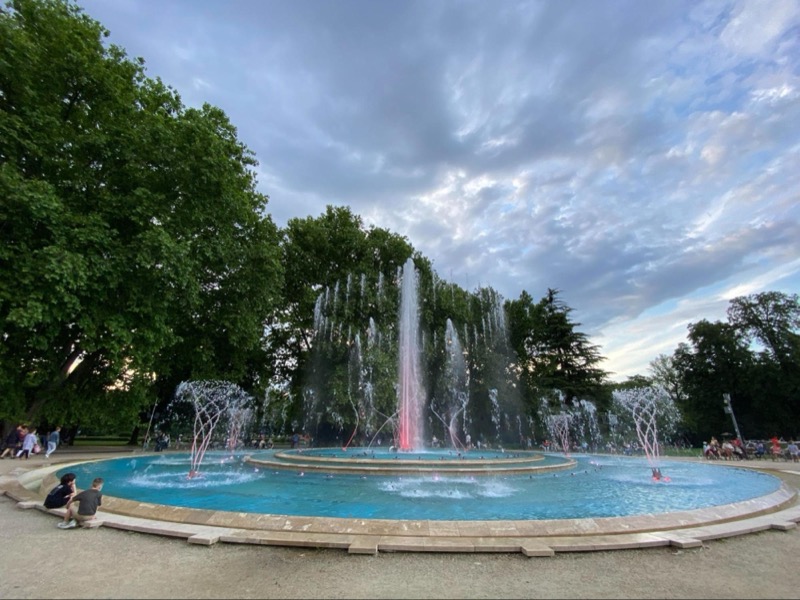
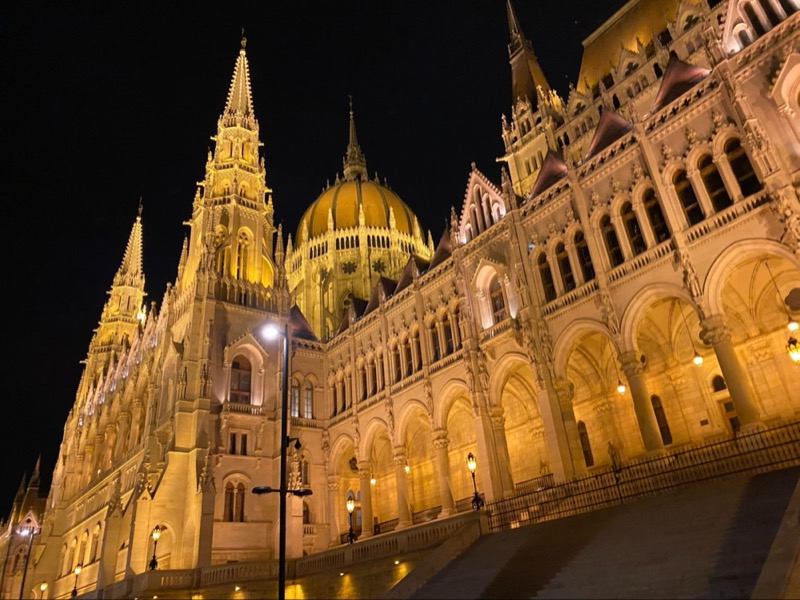

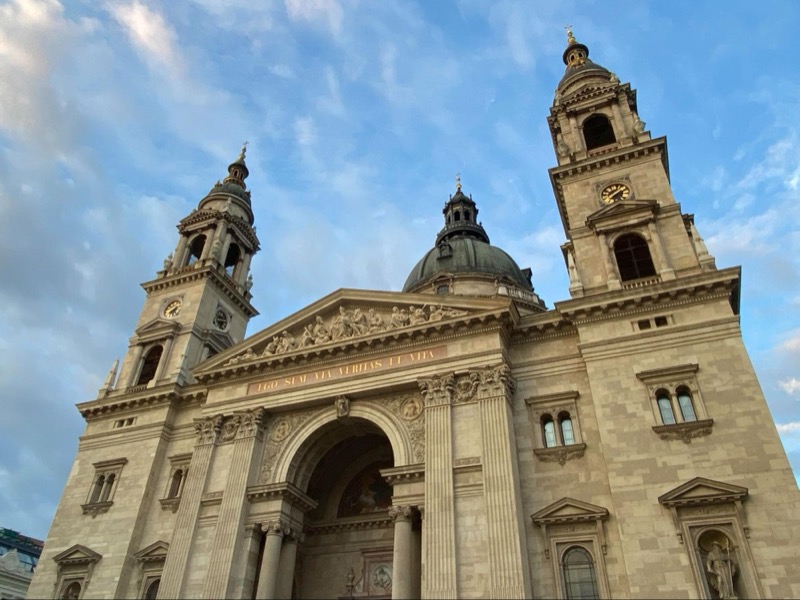
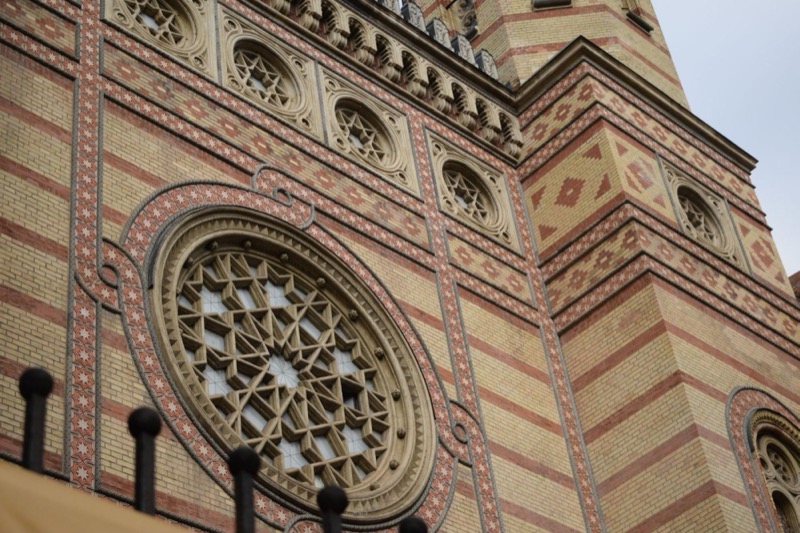
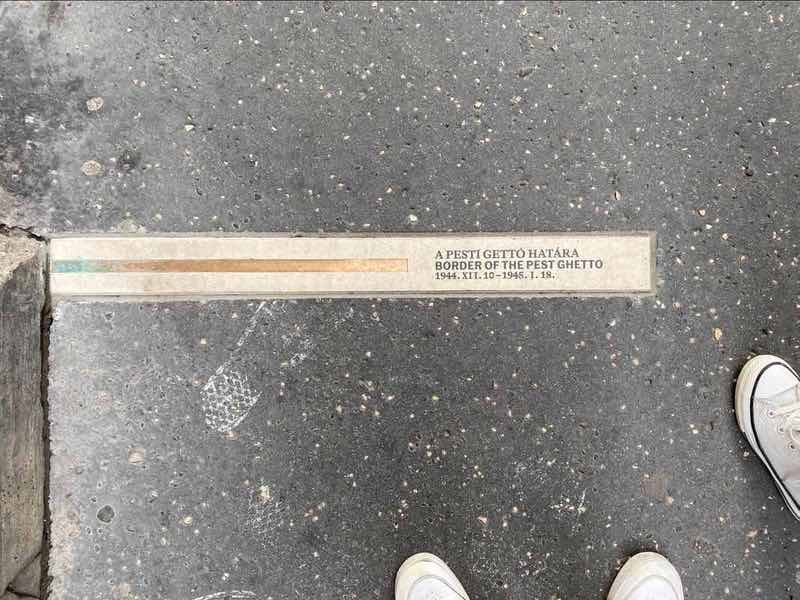


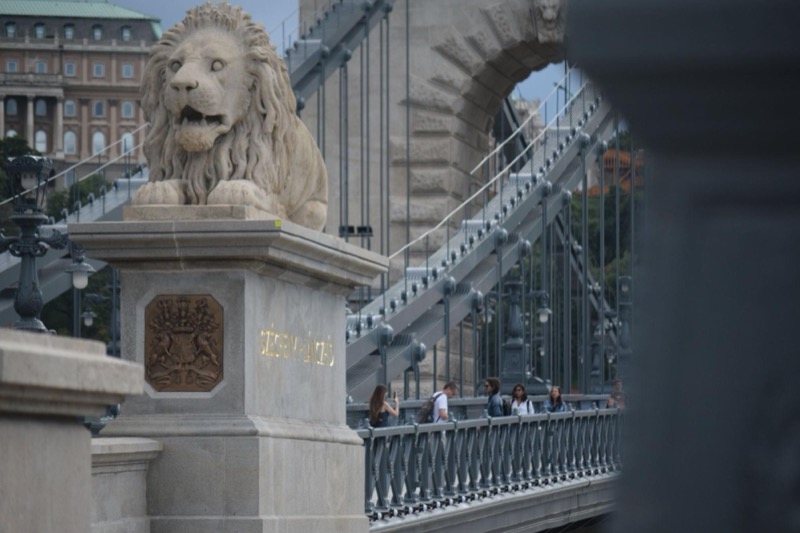
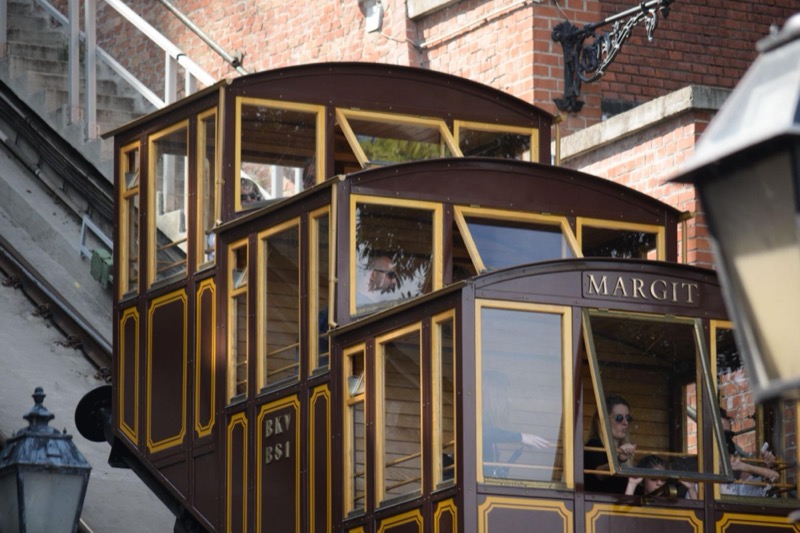
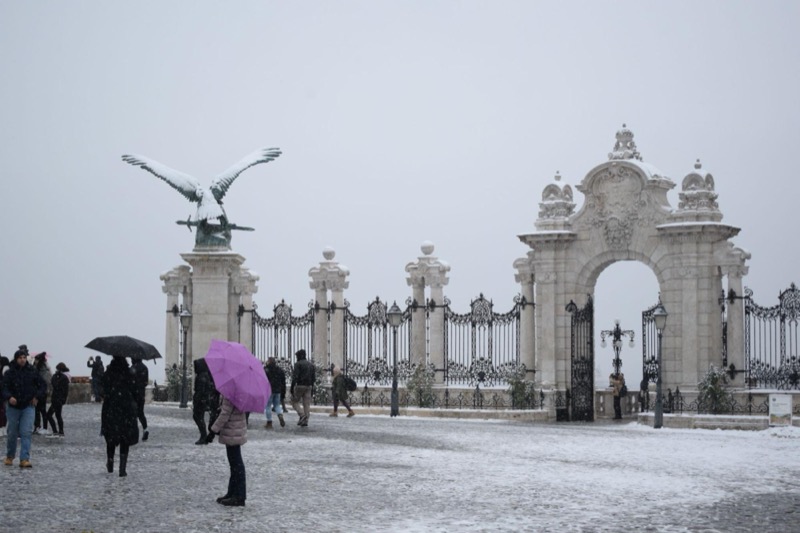
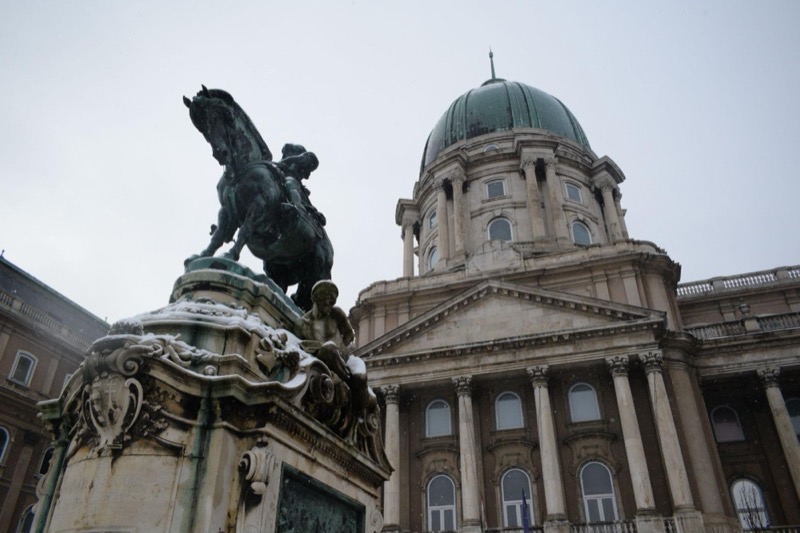


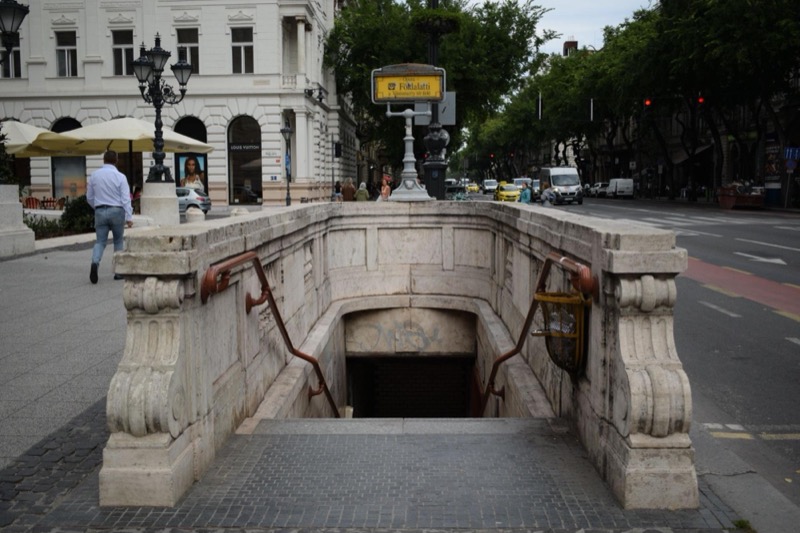
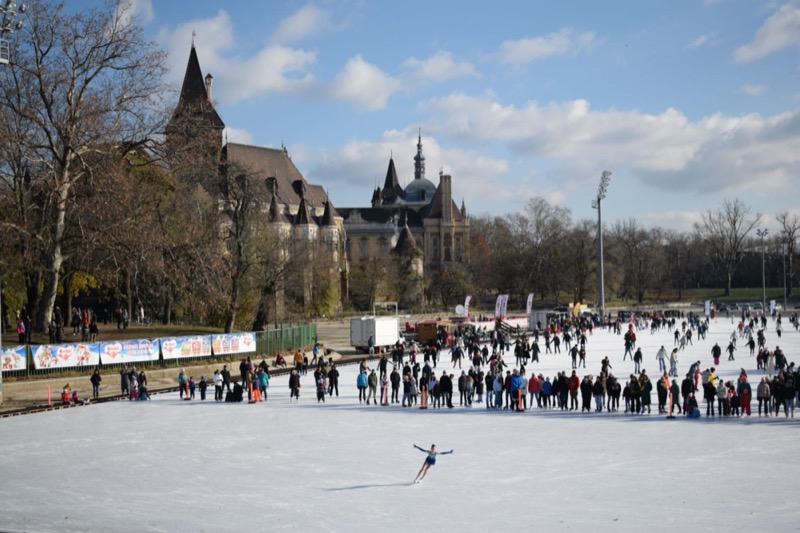


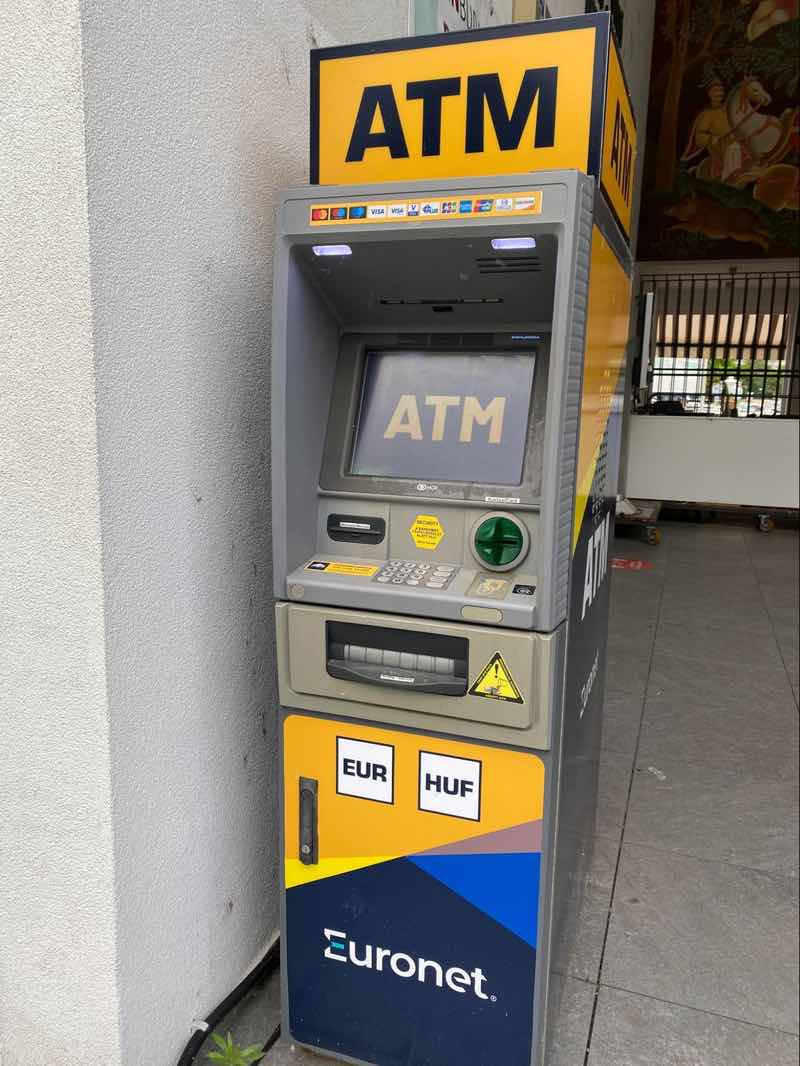

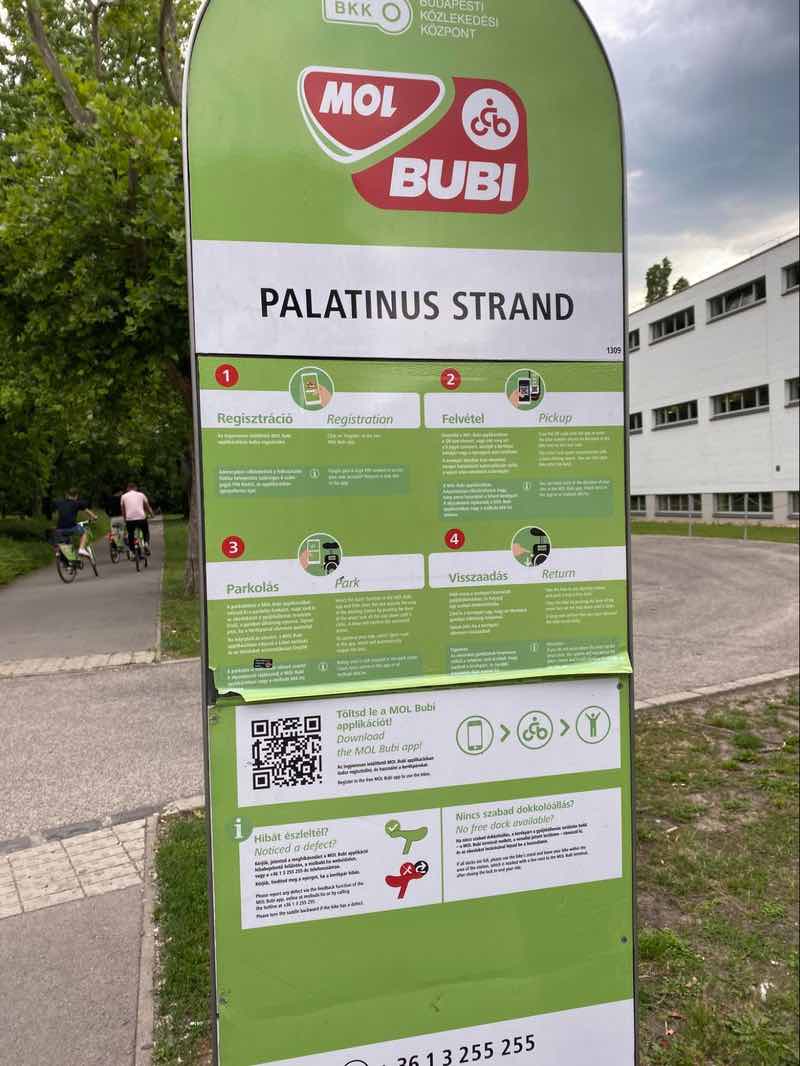
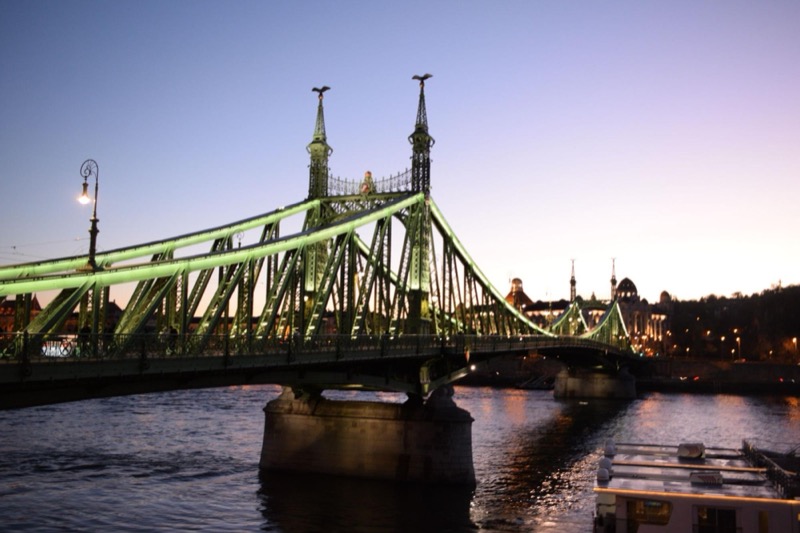
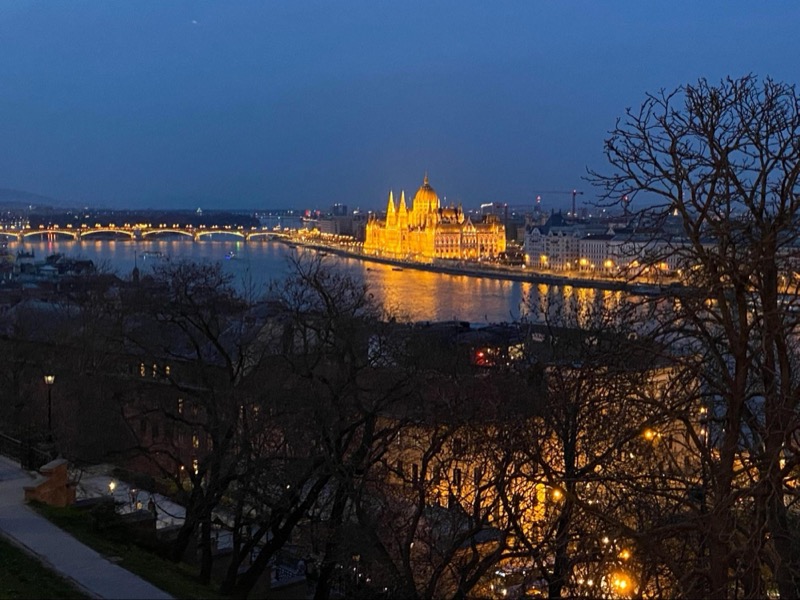
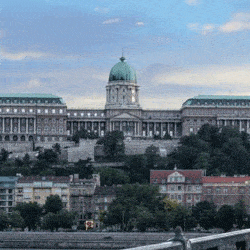 Budapest Hungary – A Reason to Love Europe
Budapest Hungary – A Reason to Love Europe Travel to Budapest, Hungary – Episode 607
Travel to Budapest, Hungary – Episode 607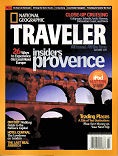 Travel to Budapest, Hungary – Episode 35
Travel to Budapest, Hungary – Episode 35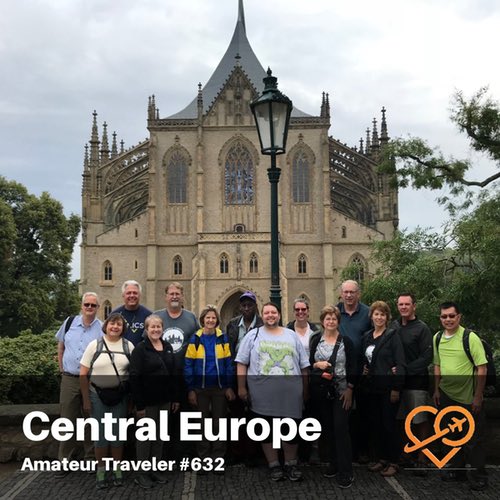 Travel to Central Europe (Prague, Krakow, Budapest) – Episode 632
Travel to Central Europe (Prague, Krakow, Budapest) – Episode 632
